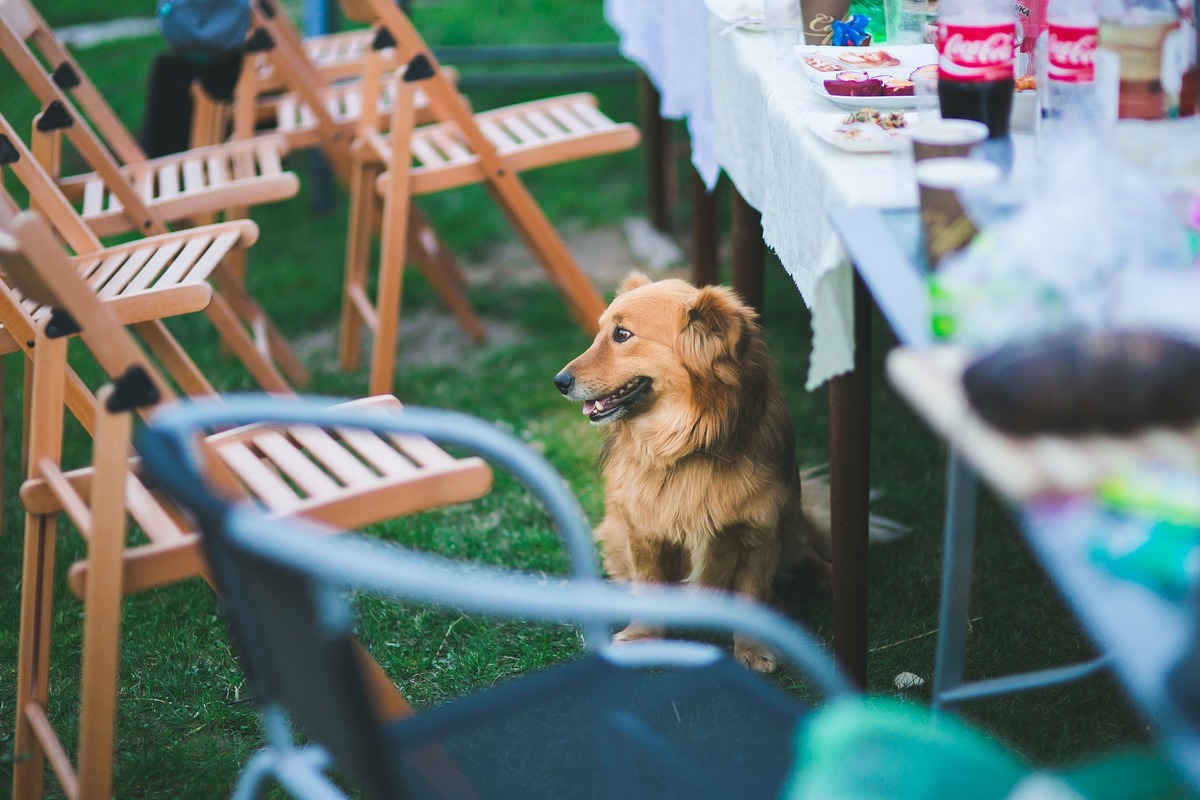Summer is here, and we’ve all got vacation on the mind! Are you planning a camping getaway and considering bringing your furry friend along for the fun? If so, we’ve compiled a list of simple camping safety tips to consider when travelling this season.
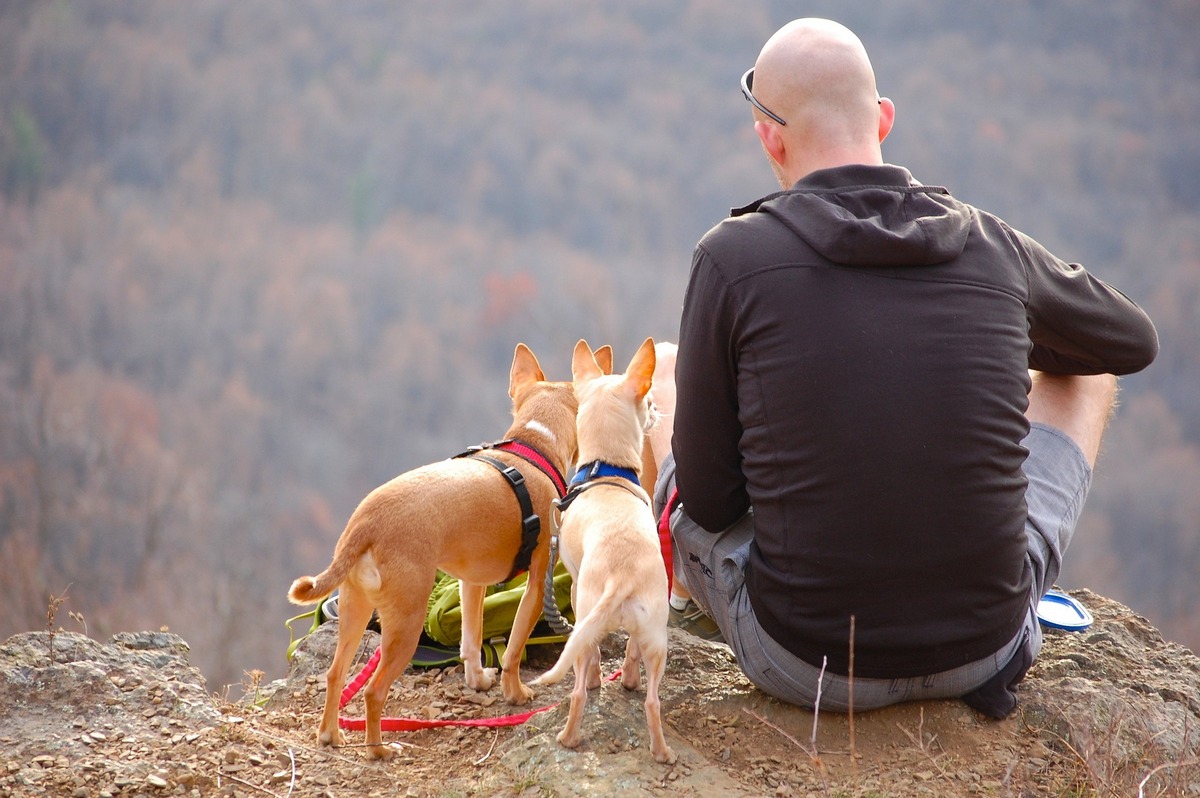
Preventing your pet from becoming lost (and knowing what to do if they slip away)
Make sure your pet is easily identifiable in case they escape from a camping tent or while hiking, especially if you’re quite a ways from home. We suggest having proof of ownership and a photo of your pet on hand. Microchipping your pet ahead of time also ensures that if your pet were to end up at a shelter far away from home, you could be easily contacted. It’s a good idea to have a printed photo of your pet with you in the instance that they become lost and you are unable to access a cell phone or internet connection to pull up a digital photo.
Being able to call your pet to you is a valuable skill that you can learn at Lollypop Farm’s Reliable Recall training class! If your pet is off-leash or slips away in a busy campsite, you want to be sure that you are able to call them back to you.
If your pet does become lost while camping, contact the campsite administrators and provide information about your pet, as well as local SPCAs and shelters where your pet may be turned in. Here are some more basic instructions to follow courtesy of our Lost and Found service.
Pet first aid and emergency preparation
Have a phone number on hand for the nearest veterinarian or animal hospital in case of an emergency. You never know what might happen when out in the wilderness, and it’s better to be safe than sorry if your pet were to need immediate veterinary attention. It’s always a good idea to have a pet first aid kit on hand including basic products such as gauze, ice packs, hydrogen peroxide, adhesive tape, antiseptic wipes, cotton balls, scissors, and tweezers. (Here’s where you can find even more tips on creating a pet first aid kit from the HSUS.)
Knowing how to help your pet in a time of need is a great skill to have all year round. Consider taking a Pet First And & CPR course at Lollypop Farm!
Pet-Proofing your campsite
When you first arrive and begin to set up your tent or campsite area, take a look around first. There’s a chance that previous campers left food or waste that may be dangerous if consumed by your pet. Also check the area for broken glass, fishing line, fishing hooks, and other materials that may be dangerous if chewed or stepped on.
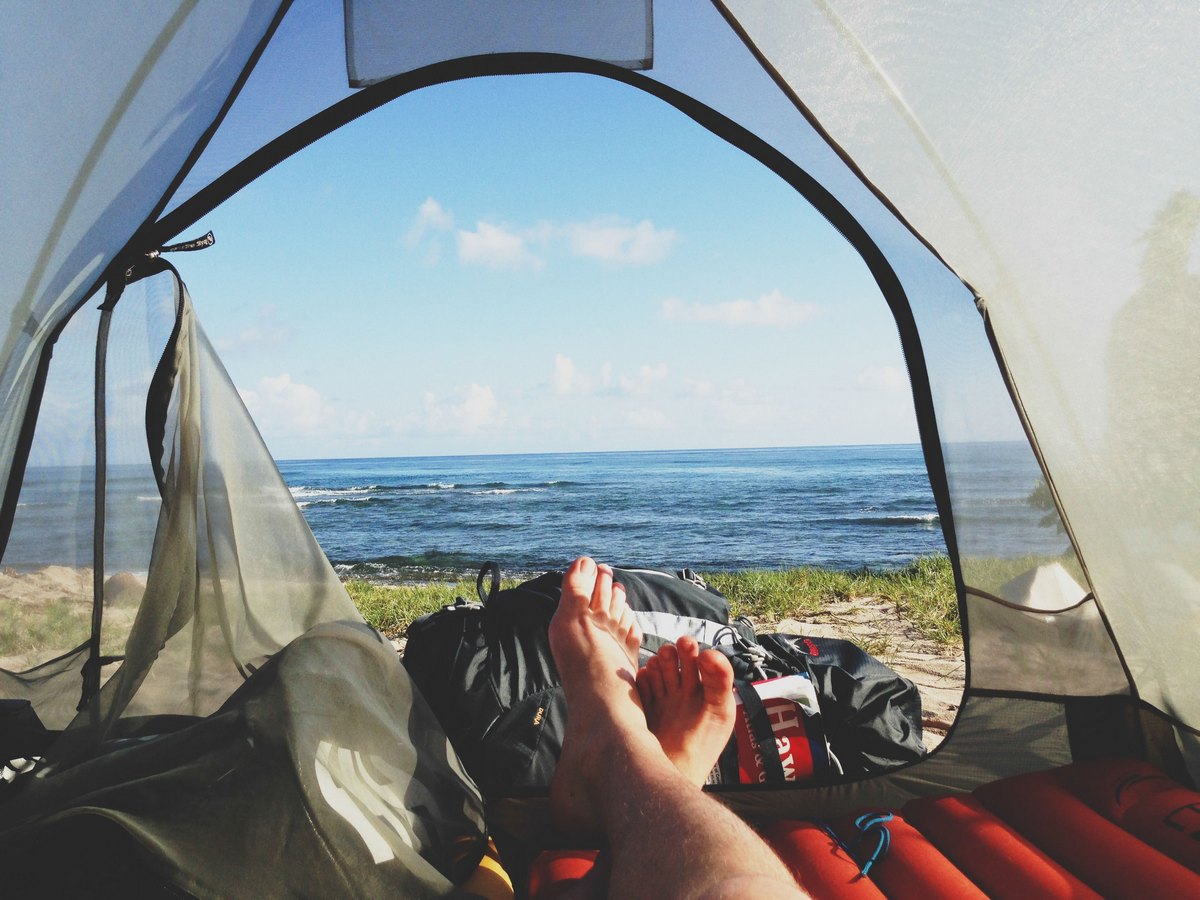
Hiking Safety
Make sure to bring fresh water for your pet while hiking or doing outdoor activities, and know the signs of heatstroke in pets. Bringing extra water bottles specifically for your pets is recommended – on a hot day, you may not realize just how much water needs to be consumed between you and your pet to stay properly hydrated! Snacks are also vital – when you’re burning more calories and getting hungry while hiking, so is your furry friend!
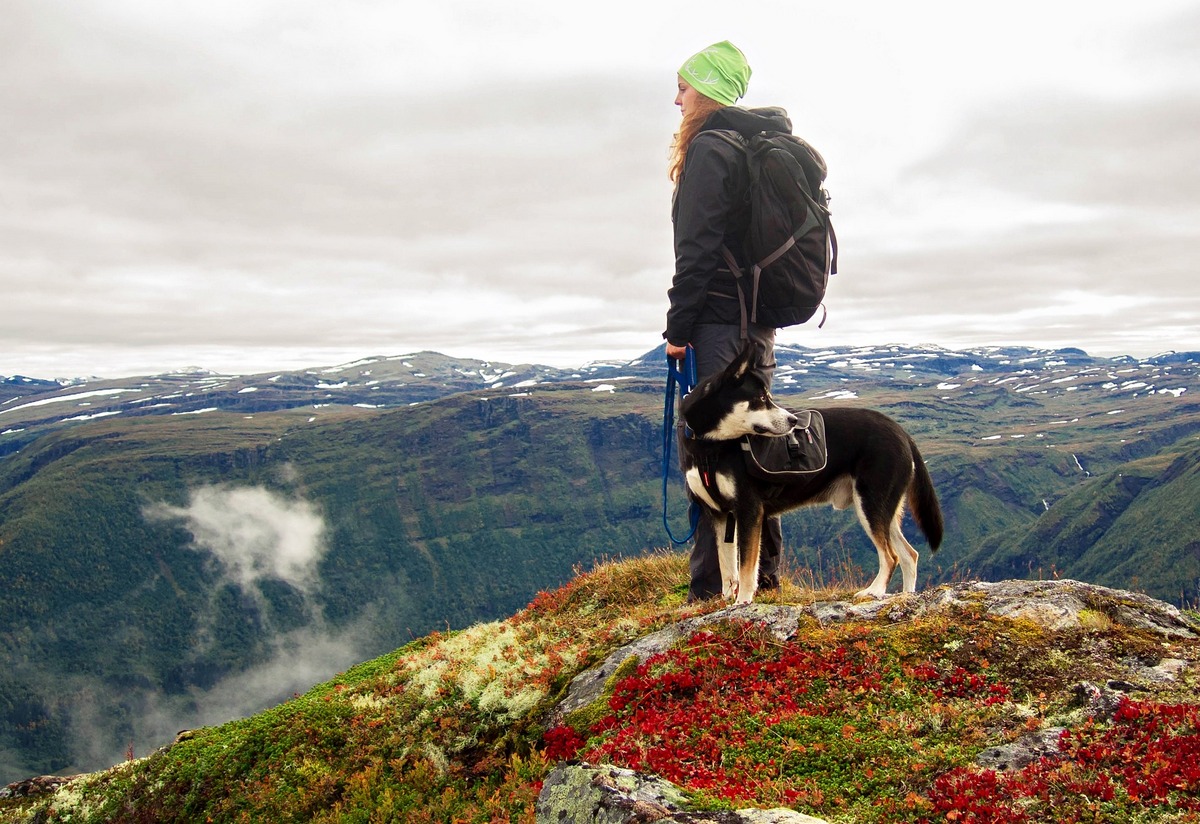
Signs of heatstroke include: heavy panting, glazed eyes, difficulty breathing, drooling, weakness, seizures, diarrhea, vomiting, and unconsciousness. If your pet starts showing any of these symptoms, move them to the shade or a cool area immediately. Apply cold towels or ice packs to their head, neck, and chest, or run cool water over them. You can also let them drink small amounts of cold water or lick ice cubes. If you notice signs of heatstroke, take your pet to the nearest veterinarian as soon as possible.
Campground protocol and crate safety
Think twice about letting your pet roam freely in a campsite. (Most public campsites actually don’t allow pets to wander at large.) You likely don’t know the other campers or their pets, and it’s best to avoid unwanted meetings with potentially unfriendly animals. Bringing an appropriately sized crate for your pet is also a good idea if tent camping – a clever pup can certainly find their way out of a vinyl tent. Make sure that you keep the crate inside of your tent to avoid your pets interacting with unwanted animals like bears, raccoons, or skunks.
Licensing and immunizations
It’s important that your pet is both licensed and vaccinated. Many campgrounds require proof of licensing and recent immunizations (including rabies) when campers bring pets along for the vacation. It’s a good idea to have paper copies of these types of forms, in the instance that you are out of reach of cell phone service or are unable to find Wi-Fi access.
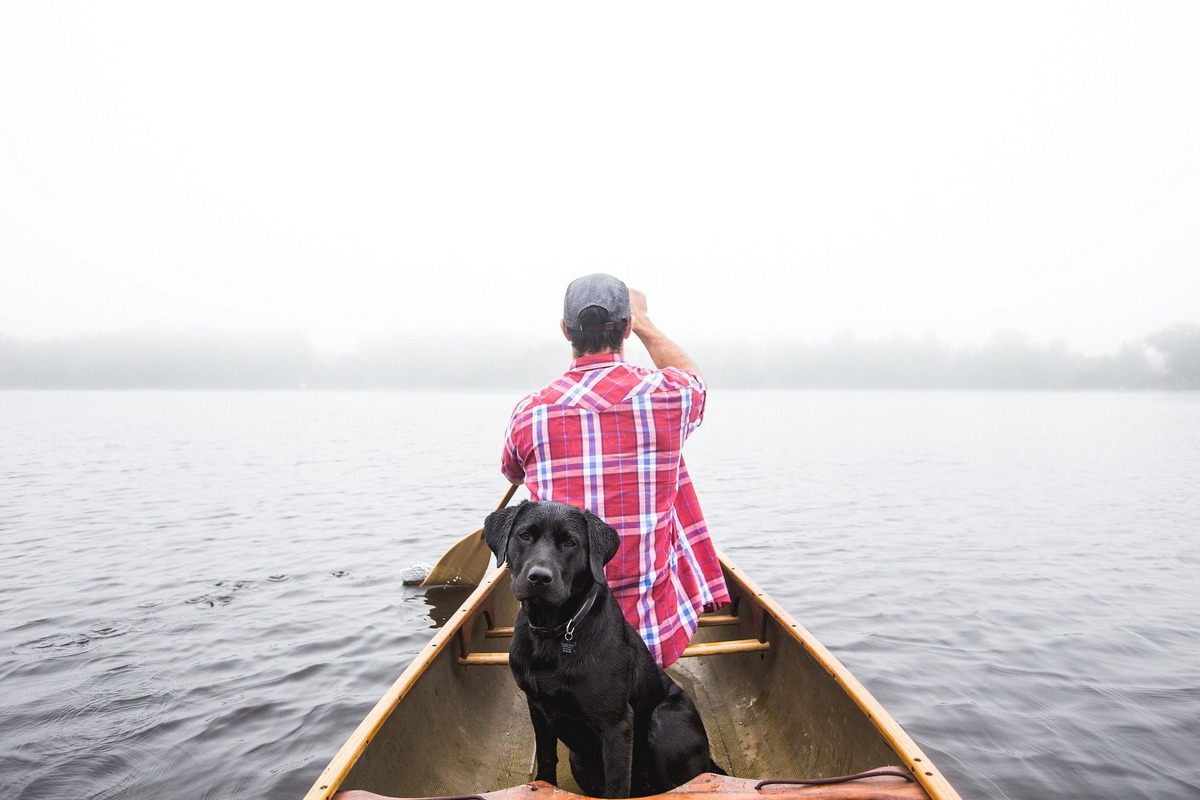
Water Safety
Planning on canoeing, kayaking, or boating with your pup? It can be a lot of fun if the proper pet safety precautions are in place! First and foremost, only take your pup paddling if they already like the water. You want to make sure that if your pet is afraid of the water, they don’t panic and potentially tip a kayak or canoe. It’s always a good idea to desensitize your pup to a kayak or canoe on land before taking to the lakes. You may want to consider investing in a harness with a handle or a life preserver for your pet, so that they can enjoy the water safety and easily be lifted in and out of your craft. And lastly, remember that your pup will still need to take potty breaks on land!
Have a fun and safe summer with your pets!
Find more summer safety tips here.

